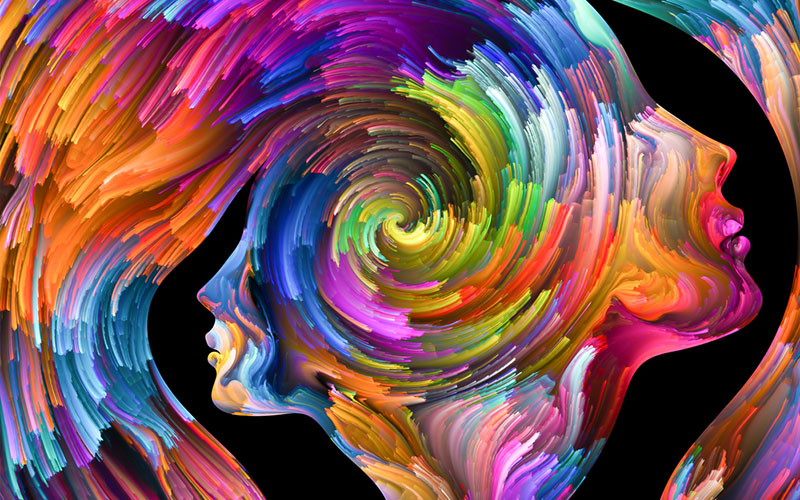95 seconds is all it takes for a consumer to make up their mind about the product they are going to purchase. The consumer's decision is subconscious, and it is aided by visual elements of the packaging, including size, font, color, and more. In fact, various studies have found that more than 80% of consumers consider color when making their purchase decision.
The empirical evidence behind this statement is so strong that marketers have been using colors to build brand identity, elevate brand personality, and influence the purchase intent of consumers. You must have heard that, 'Blue leads to conversions' and that 'yellow is a happy color' quite often.
However, these are just generalized statements unproven by any fact. There is no doubt that colors are linked to human psychology and perception. However, the actual science of colors is often misinterpreted or misused. In this article, we will bust the most common misconceptions of colors in marketing. We will also discuss how you can actually use colors to build positive consumer perception.
Let's start!
The Psychology of Colors

From logos to packaging and from digital marketing to billboards, marketers are using color to influence consumer perception in creative ways. However, marketers often forget that the understanding of colors depends on the human perceiving them, context, and socio-cultural elements.
Our association with color changes throughout our lifetime: our experiences, knowledge, and exposures alter the meaning we associate with color. For instance, a child may associate the red color with a fire engine that he loves to play with, while a teenager may think of the red fire hazard sign that signifies danger.
Similarly, socio-cultural aspects also influence our preference or aversion for color; the people of a country may prefer the color of their national flag to all else as it holds a sentimentality for them. In the same way, some cultures give importance to certain colors over others; in most cultures, white is preferred to black, because it is associated with goodness.
The mistake marketers make is that they paint everything with broad brushstrokes; they mistakenly or arrogantly think that if we associate white with weddings, everyone will too. However, as we know, that is not the case. In India, white is worn on funerals, whereas wedding attire is usually red.
Likewise, some cultures perceive yellow as happy, while others view it as a sickly color. Some consider green to represent tranquility and peace, while others associate it with decease. The point is that knowing cultural differences can help make your marketing efforts more effective, especially if you are an international brand.
The Color Theory

Color Theory is an age-old concept that tries to explain how humans perceive color. It presents practical guidelines on how colors should be mixed to create a desired visual effect and to communicate a specific message to the user.
To understand the color theory, you have to look at the color wheel. By doing so, you will come to realize two things:
Warm vs. Cool Colors
The color wheel consists of warm colors (red, orange, yellow, brown) and cool colors (blue, green, indigo, and violet). It is a common belief that warm colors are energizing, and they are more effective n gaining attention. A research study, aptly named Red-Hot and Ice-Cold Web Ads, claimed that consumers are more likely to click on warm-colored ads than cool-colored ads because they are more attractive.
However, most studies suggest that marketers should be wary of such broad generalizations. In his research, the impact of color on marketing, Singh argues that managers can use warm and cool colors to increase or decrease consumer appetite, create a calming effect, enhance mood, and even reduce the perception of waiting. However, the author states that managers must consider the difference in color perception because of age, gender, culture, race, context, religion, and political affliction before creating their marketing campaigns.
The Nuance of Color
The second thing we know from a color wheel is that each color is spread across a spectrum of saturation ranging from light to dark. Apart from saturation, tint, shade, and tone also play a significant color n achieving just the right color to influence your consumer.
The nuance of colors is what gives a palette the desired emotion. The right shade of red attracts the most attention, the correct shade of yellow conveys happiness instead of sickness, and the right hue of white alludes to a modern and sleek look instead of blandness.
Therefore, marketers must consider these aspects and use them according to their brand personality, the perception they want to build in their users' minds, the color associate of their target audience, and their geographical location.
The Relationship between Color Combinations and Conversion Rate
By now, you know that colors affect human perception and behavior, but most marketers want to see whether they increase conversion as well? By conversion, marketers mean the sale of a product/service.
Let's suppose that you are on your monthly grocery run, and you stop to pick up detergent. What the marketers want to know is whether the color of their packaging influences you to purchase their product over the competitors’?
Research seems to think so; a case study found that colors can be used to incite the desired emotion in consumers, and since 80% of our buying decisions are impulsive and emotive, it can lead to higher conversions. This is why most technology companies use saturated shades of red, as they believe red creates a perception of power and motivates the consumer to trust the company.
Half of all Software development companies, social media platforms, digital marketing agencies, and tech companies use red or blue because these colors convey strength/dominance (red) and security (blue). One study found that consumers associate specific colors to certain flavors very strongly and expect companies to always adhere to this color rule.
For example, the packaging of ketchup flavored chips should always be red, salt flavored should always be yellow, and so on. The research found that people were often confused if the color of the packaging changed, which led to a decrease in sales. Another credible study found that restaurants used a specific color combination to increase consumer appetite, which led to an increase in sales.
Have you noticed that most Cal-to-Acton buttons are either red or blue? That is because they are more attractive, and they compel the consumer to click on the button. Similarly, a cookie in blue wrapping and a burger in a red packaging is more likely to sell than other colors.
So yes, the right color combination used in the right way can increase sales.
Color and Gender
Do Men and Women prefer different colors? Since the question pertains to human behavior, the results are conflicting. Some research suggests that yes, men and women do prefer different colors, and marketers should use different color combinations when targeting each group. For this reason, cars (generally marketed more to men than women) are sold in typically masculine colors such as red, blue, white, and black.
On the other hand, many researchers argue that while small differences do exist, there is not enough significant correlation between gender and color reference to suggest that marketers should make different packaging for men and women. One research indicated that North American women prefer yellow slightly more than their male counterparts. Another found that women are more partial to pink than men.
Yet another group of researchers suggests that preferences for color in gender are for specific products only. For instance, in North America and Europe, blue is associated with the male gender, whereas pink is associated with the female gender. This is the reason that mothers to be purchase blue clothes and accessories for their child while mothers of newborn girl purchase pink or purple.
Researchers conclude that for products like clothes and shoes, color is a depth-cue, meaning that it plays a significant role in the purchase decision. However, for most other products such as machines, vehicles, furniture, and utensils, etc. gender reference takes back seat to socio-cultural factors.
There is an interesting thing to note here since most societies are still masculine, the bulk of our infrastructure, machinery, vehicles, technological gadget, and products of everyday use are in colors which are preferred by men. You won't see a pink-colored public bus unless it is specially made for women. Every train, bridge, and monument is either red, blue, or black.
The Key Takeaway; Marketers should consider color differences in gender in industries where color influences purchase decisions, such as clothing and lifestyle. They should also pay attention to colors if their target market is primarily made of either men or women, and they want to be associated as a brand for men or women.
Color Names – Do they Matter?
Mocha or Brown, Amethyst or Purple? Sunshine Yellow or Yellow? Does it really matter?
Apparently, it does! Research suggests that people are more likely to purchase products that have fancy-sounding color names rather than plain old ones. This is true for food, Makeup, clothing, paint, and other lifestyle items.
A research study, a rose by any other name, found that the name of the colors does indeed influence purchase decisions. The research found that in specific industries, consumers are more likely to products with creative names than generic names. By naming the shade of color they are using creatively, marketers can deliver the biggest impact on their consumers.
Conclusion
Red, Blue, Orange, Yellow, Green, and all the shades in between influence consumers to think and behave in a certain way. The right shade of yellow can make you reminiscence about sun-kissed walks in the park as a child, whereas a perfectly calibrated tone of red can make you remember the dress you wore at prom.
Colors can elicit strong emotions – positive or negative, in humans, and it is the job of the marketers to leverage these emotions to sell their products. Just remember to use color in the context of culture, religion, socio-political associations, climate, gender, and age.







